Bonsai come in small, medium and large sizes, are broadly divided into tree and grass types, and are further categorized by their form.
This post is also available in: CN (CN) TW (TW) JP (JP)
Tree size
Bonsai comes in a variety of sizes, from the palm to over one meter. Each has its own charm, but the size that is easy to handle is the size that can be carried by one person. It is also recommended to grow on the veranda of the apartment.
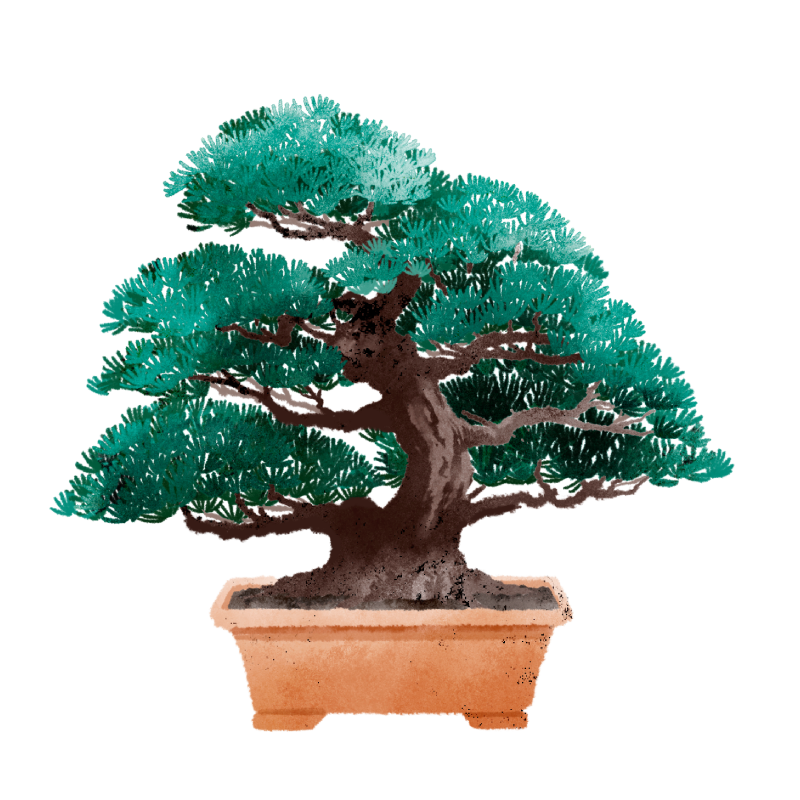
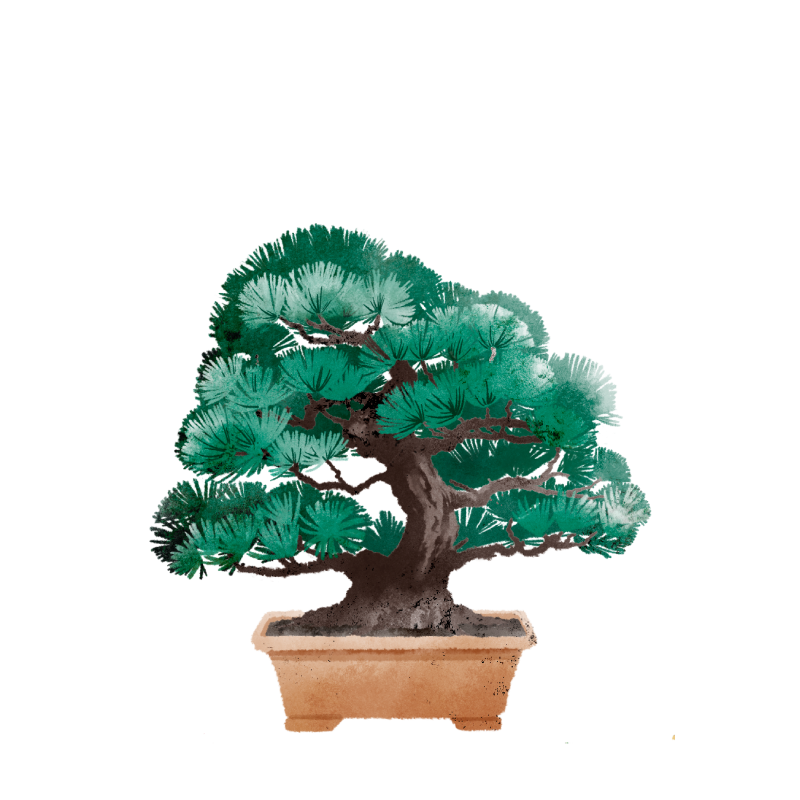
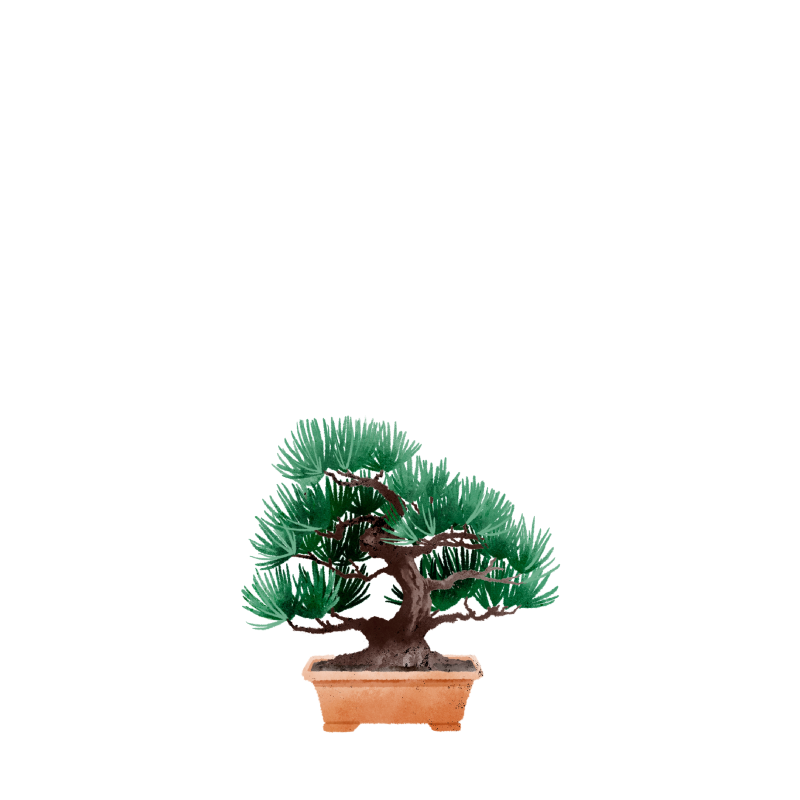
Those smaller than 10cm may also be called mini bonsai.
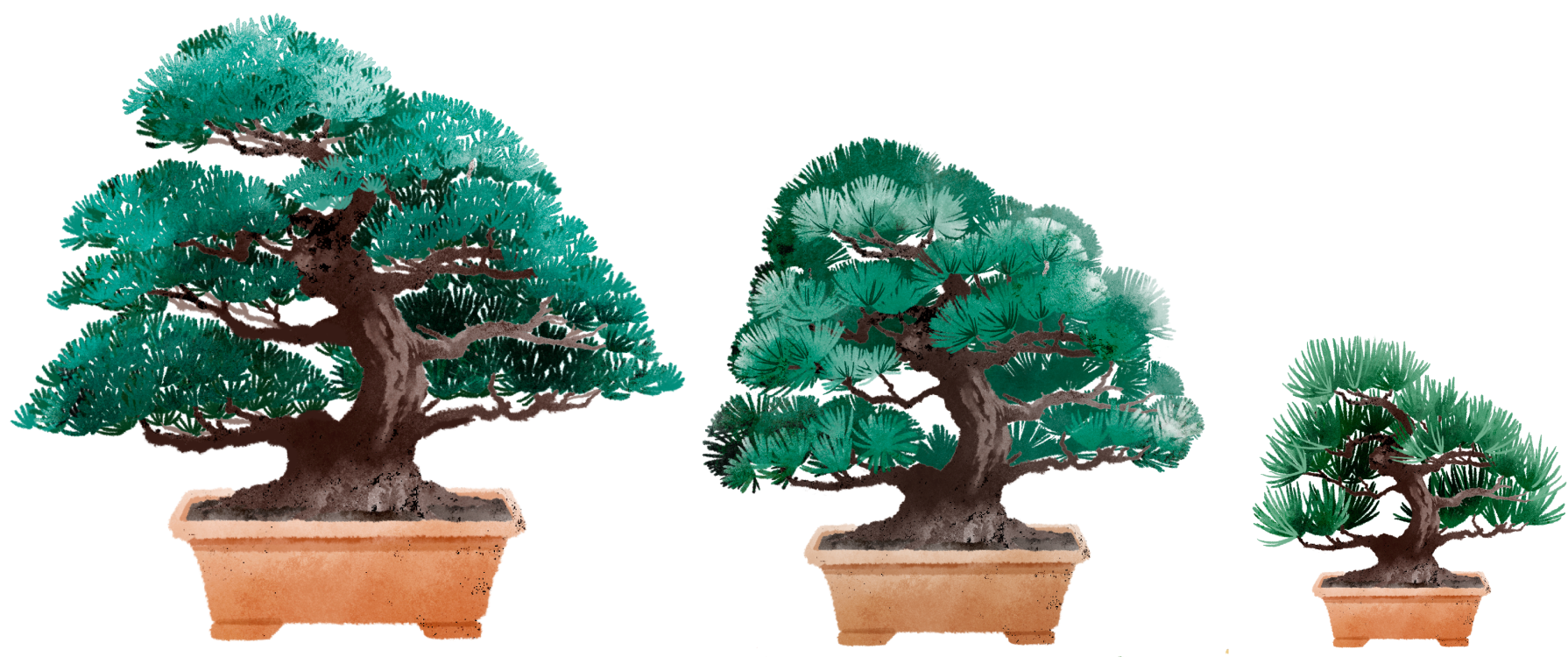
Those smaller than 10cm may also be called mini bonsai.
Types of bonsai
Five bonsai types classified by their dominant features
Broadly speaking, bonsai are divided into “trees” and “grass”, with trees being further classified into four types depending on their dominant feature: coniferous (or evergreen), deciduous trees, flowering trees, and fruiting trees. Most trees that are not conifers are broadly referred to as “miscellaneous trees”.
As bonsai take on different appearances as the seasons change, each type is best viewed at a particular time of year.
Most flowering types are at their best when they bloom, between early spring and early summer, while the best time of year to view fruiting types is from fall through early winter, when the fruit matures and deepens in color. Grown for their leaves, deciduous types are attractive both in spring for their new growth and in fall for their changing colors. The bare branches left in winter after the shedding of their leaves is also a major highlight.
Coniferous or evergreen trees retain their green leaves even in winter and can be appreciated all year round, but it could be said that the period from fall to winter, when the green foliage of conifers stands in contrast to the bare branches of deciduous types, is when they are at their most attractive.
Here, we look at the various characteristics of each type and how to appreciate them.
Coniferous trees
When we think of bonsai, many people likely think of species of pines. The stereotypical evergreen needle-leaved tree, a pine’s greenery can be enjoyed all year round. Many famous trees that are hundreds of years old are also pine trees, and it has been standard practice to make pines the principal tree in ornamental bonsai displays.
Embodying both strength and grace, conifers are admired for their dignity and appearance of antiquity and can be trained into all kinds of forms. Particularly popular among the conifers are Japanese black pines, Japanese white pines and Chinese junipers, collectively known as the three branch families of conifers, or the big three.
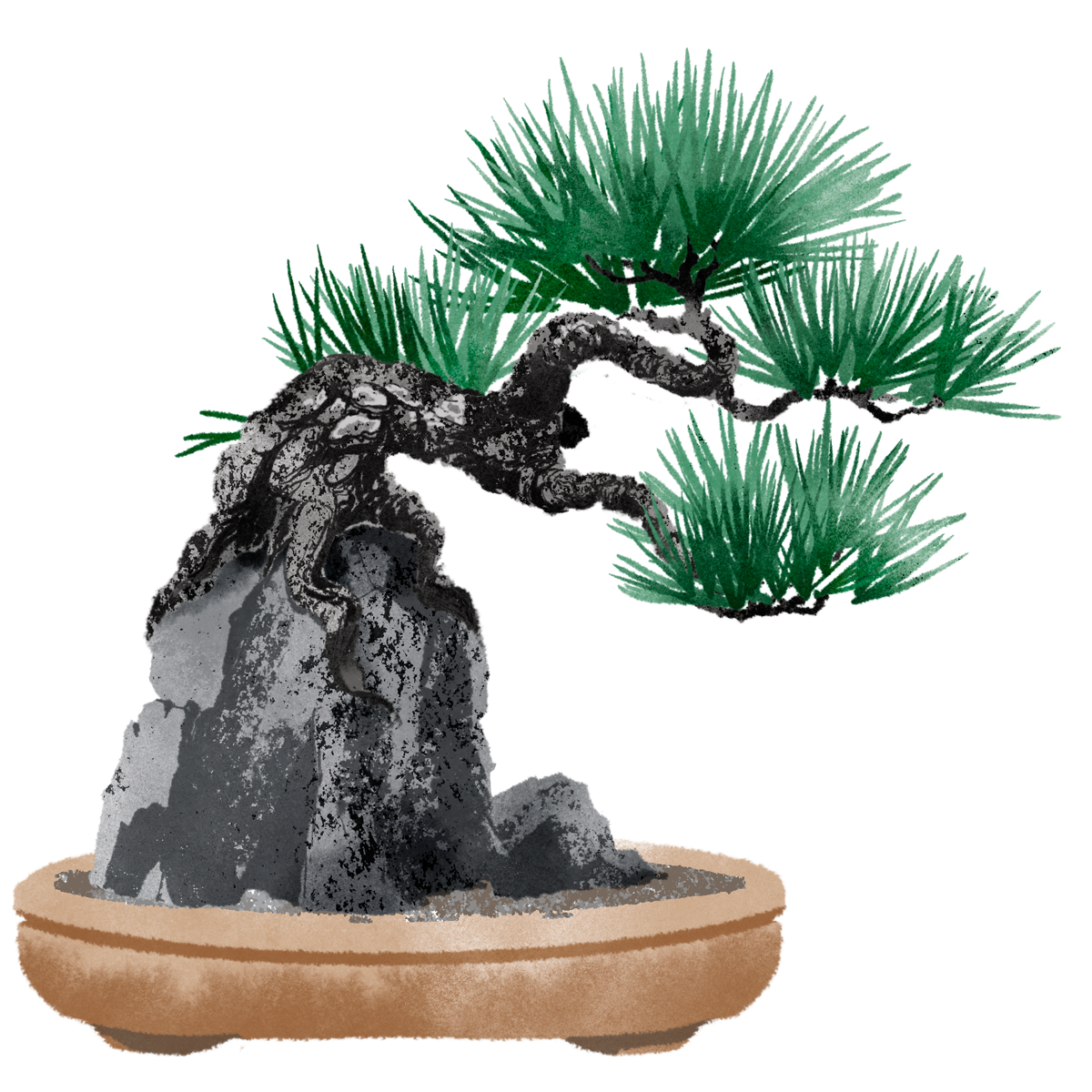
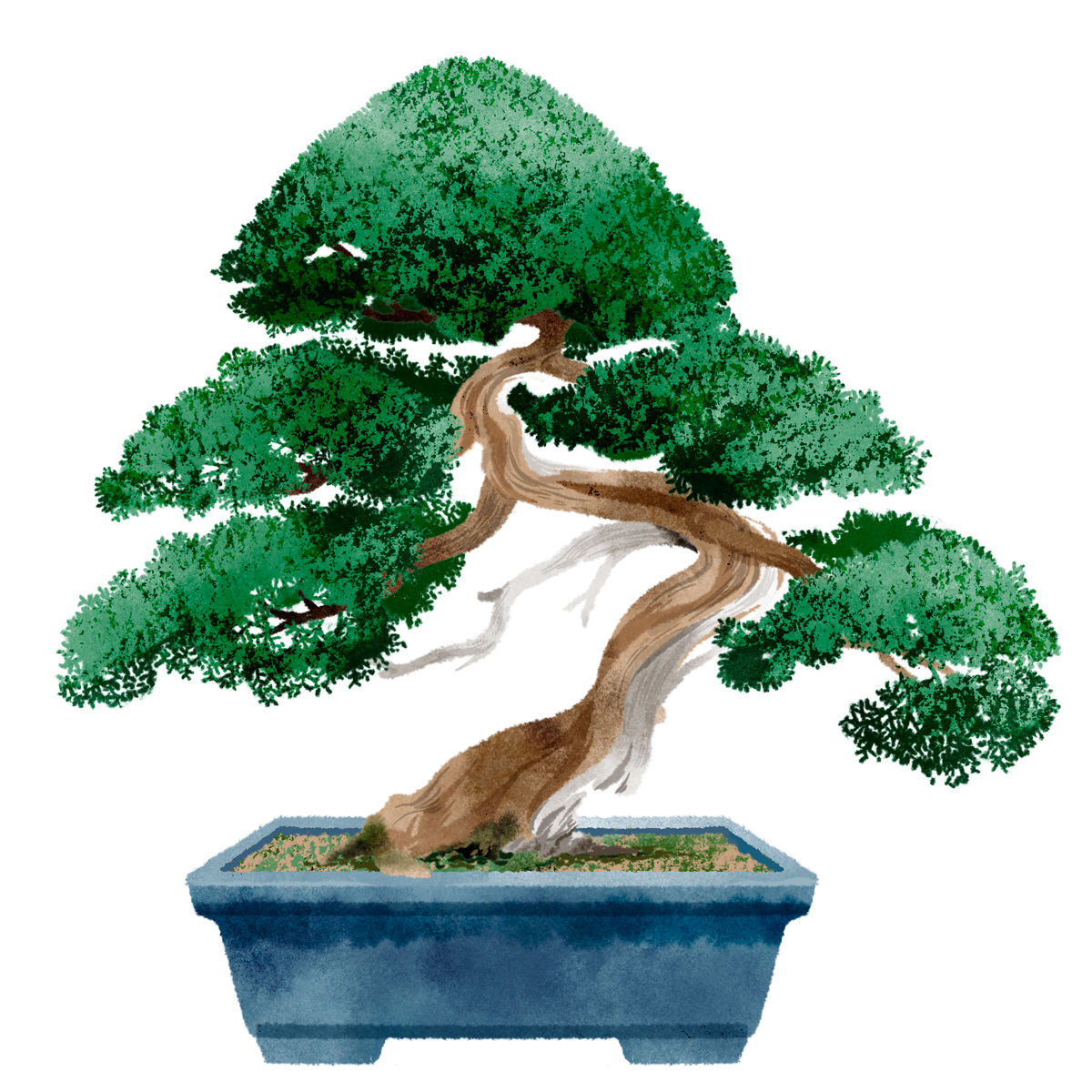
Flowering trees
Types of bonsai that look best when in bloom are called “flowering types”, and their vivid hues and fragrances create an atmosphere of cheerful splendor.
Most flowering types blossom from early spring to early summer. The plum is the first to bloom, starting in winter, and is among other well known flowering trees such as camellias, cherries, quinces, roses, rhododendrons and hydrangeas. The highlight of these trees is of course the flowers, but as they are bonsai, the graceful shape formed by the trunk and branches and the overall orderly neatness are also important.
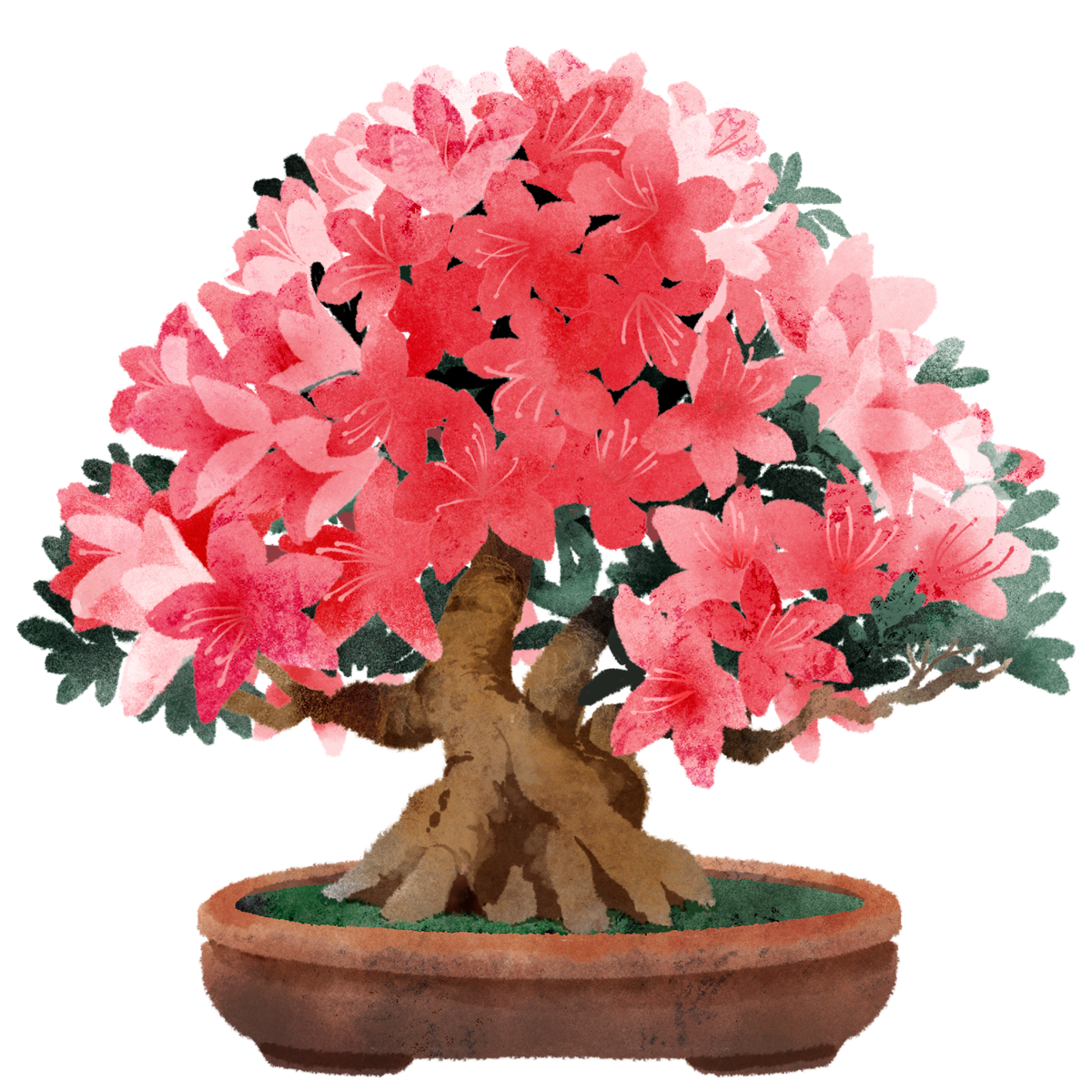
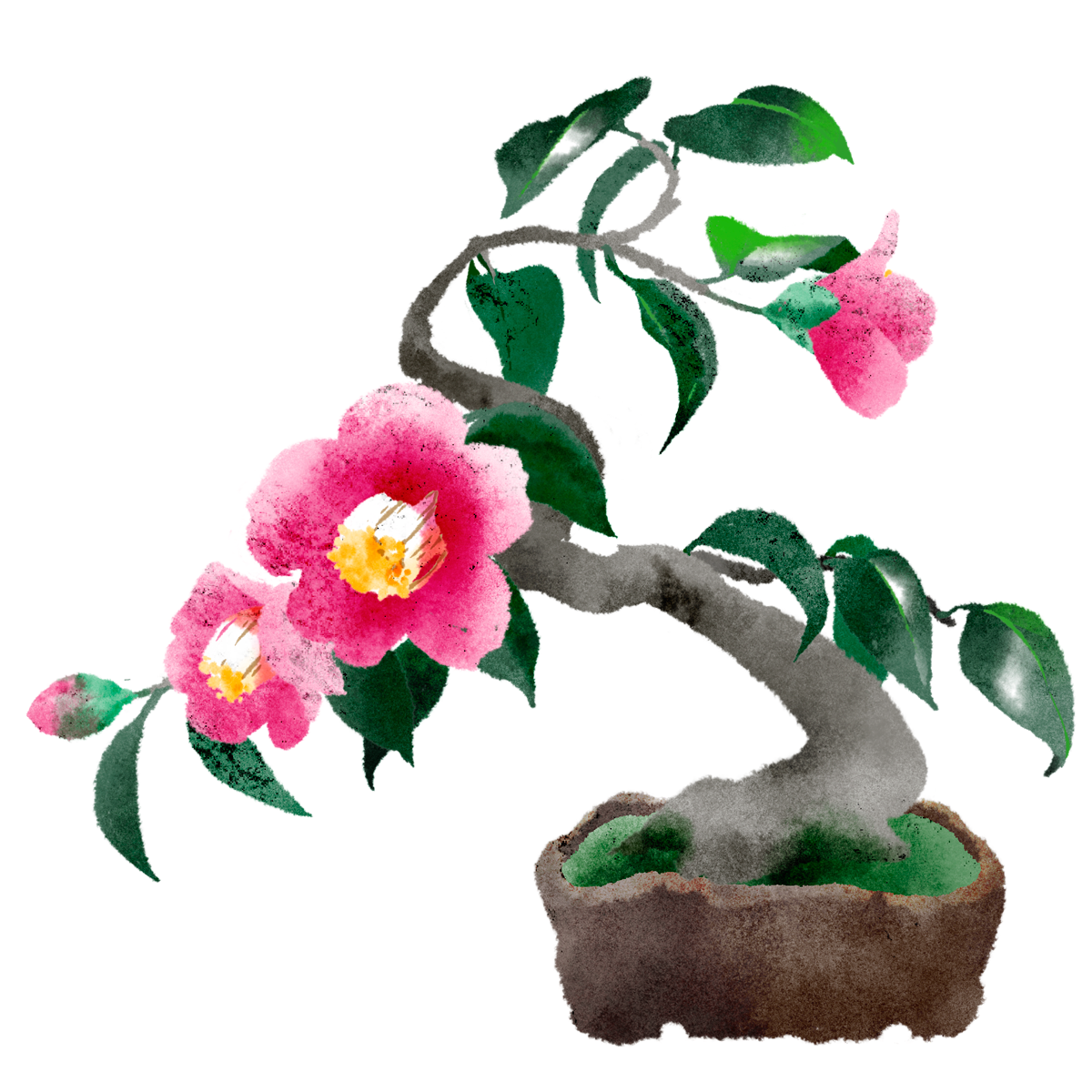
Fruiting trees
Types of bonsai that are best viewed when their branches are laden with ripe fruit are known as “fruiting types”. It can be said that they symbolize a bountiful harvest, with the fruit remaining on the trees after the leaves have fallen evoking the changing of the seasons. Most trees of this type fruit from fall to early winter, but oleasters and some other types bear fruit in spring or summer.
Typical fruiting types include persimmon varieties such as the diamond-leafed persimmon which recall the scenery of mountain villages in the fall; types of apple that look like cute, realistic miniature versions of the edible varieties; Japanese winterberries, pourtheia villosa, and firethorns with their little red berries; and Japanese beautyberries with their unusual, attractive purple fruit. Choosing a pot that sets off the color of the fruit increases the appeal of fruiting bonsai.
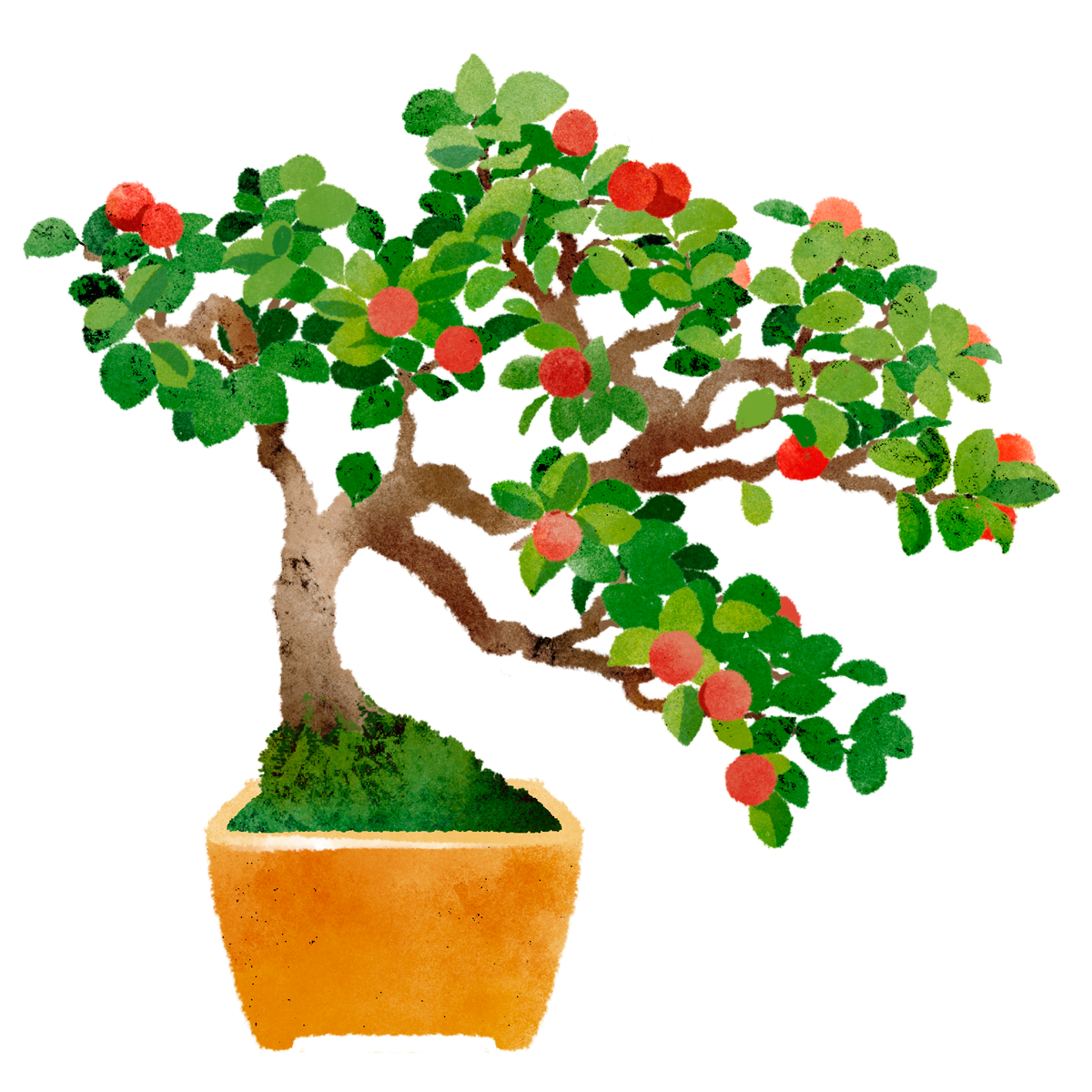
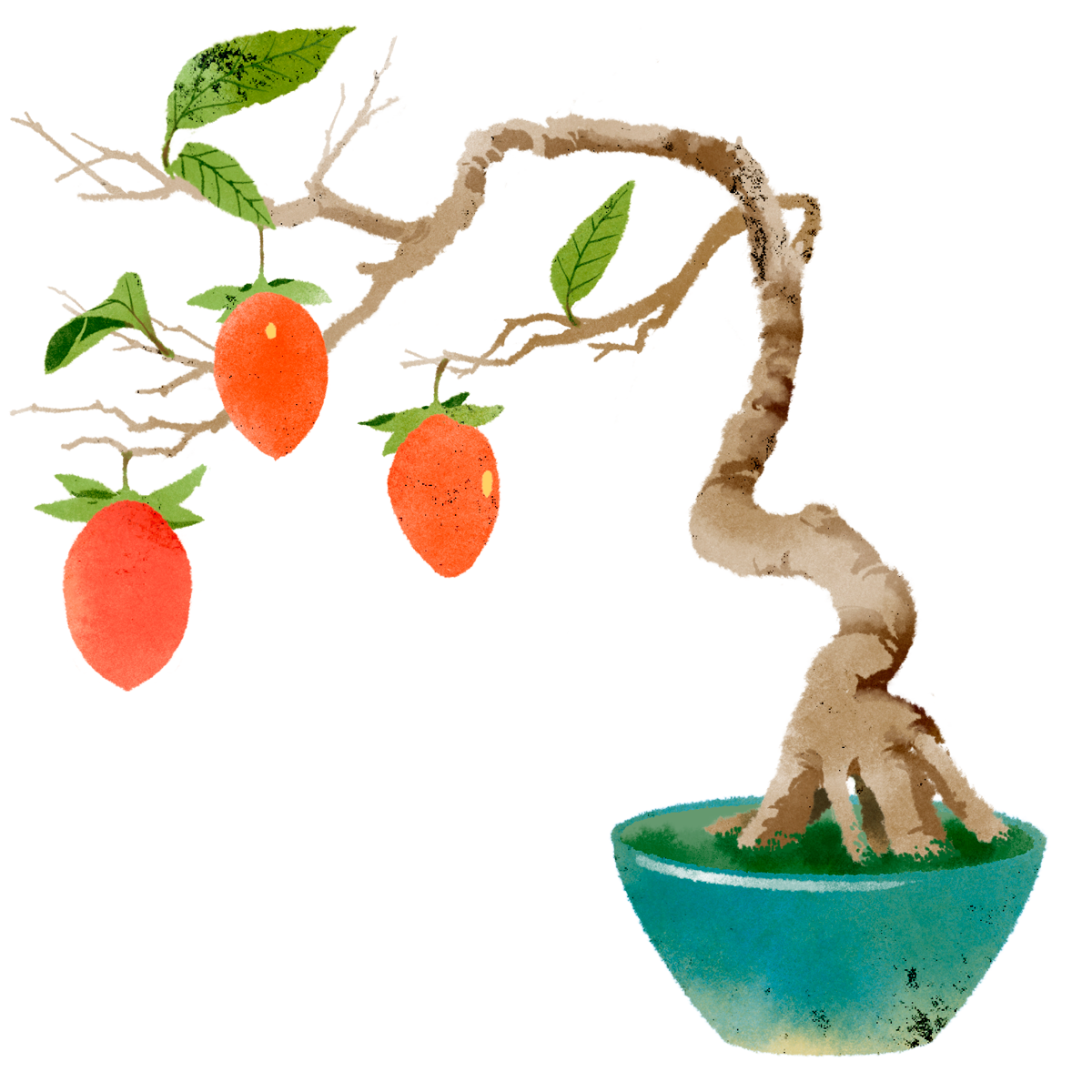
Deciduous trees
Types of bonsai that are admired mainly for their foliage, which gives the tree a different look depending on the season, are called “deciduous types” and usually indicate broad-leaved trees that lose their foliage in winter.
Sporting new buds in spring, fresh greenery at the start of summer, various colors in fall and completely bare branches in winter after they have lost their leaves, it could be said that these are the bonsai that offer the most enjoyment as the seasons change. Many lose their leaves over winter, although some such as the Asiatic jasmine retain their leaves year round.
Many foliage trees are sturdy and easy to grow, so are recommended even for beginners. Japanese maples, liquidambars, zelkovas, birch varieties, hornbeams, stewartias, ginkgoes and so on are typical deciduous trees.
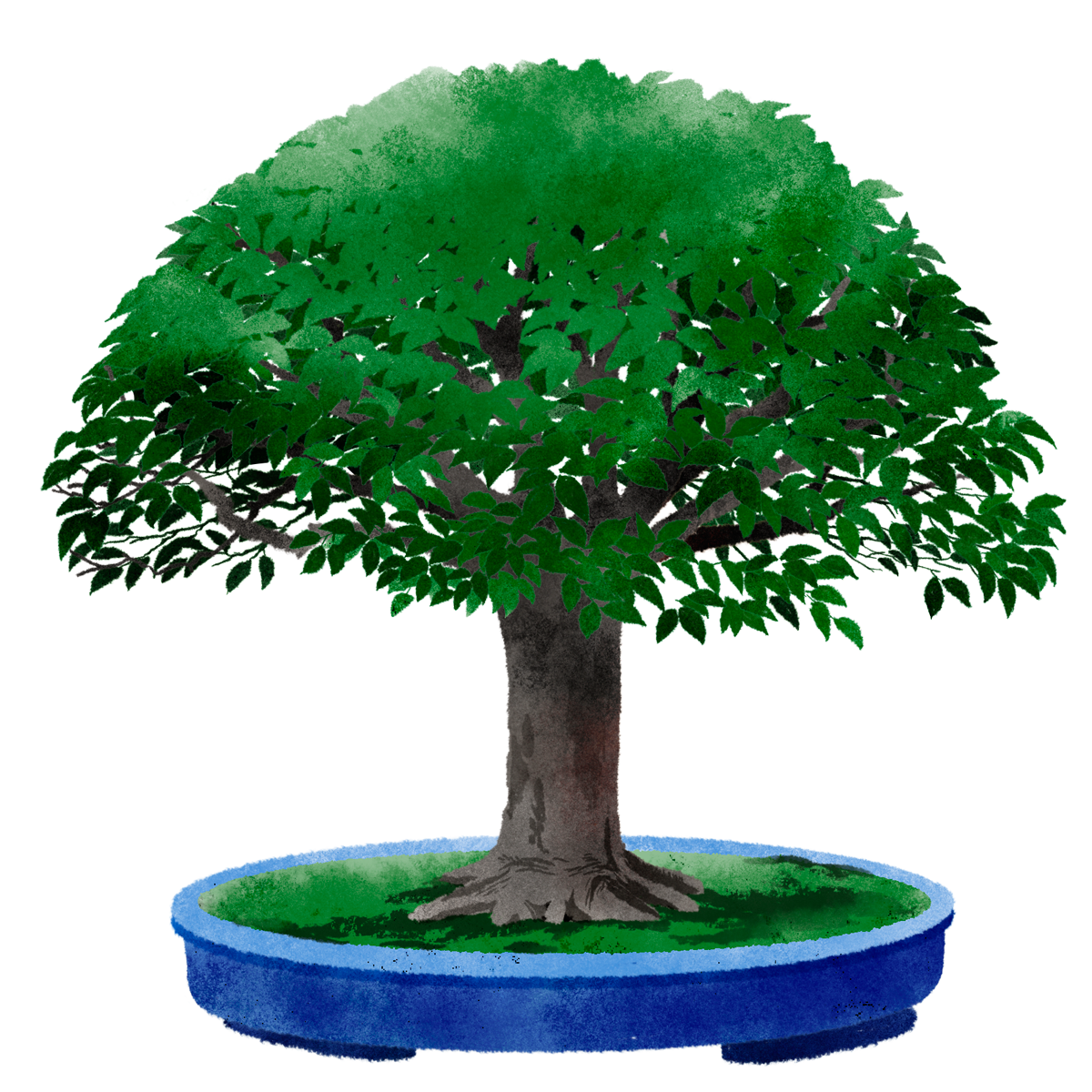
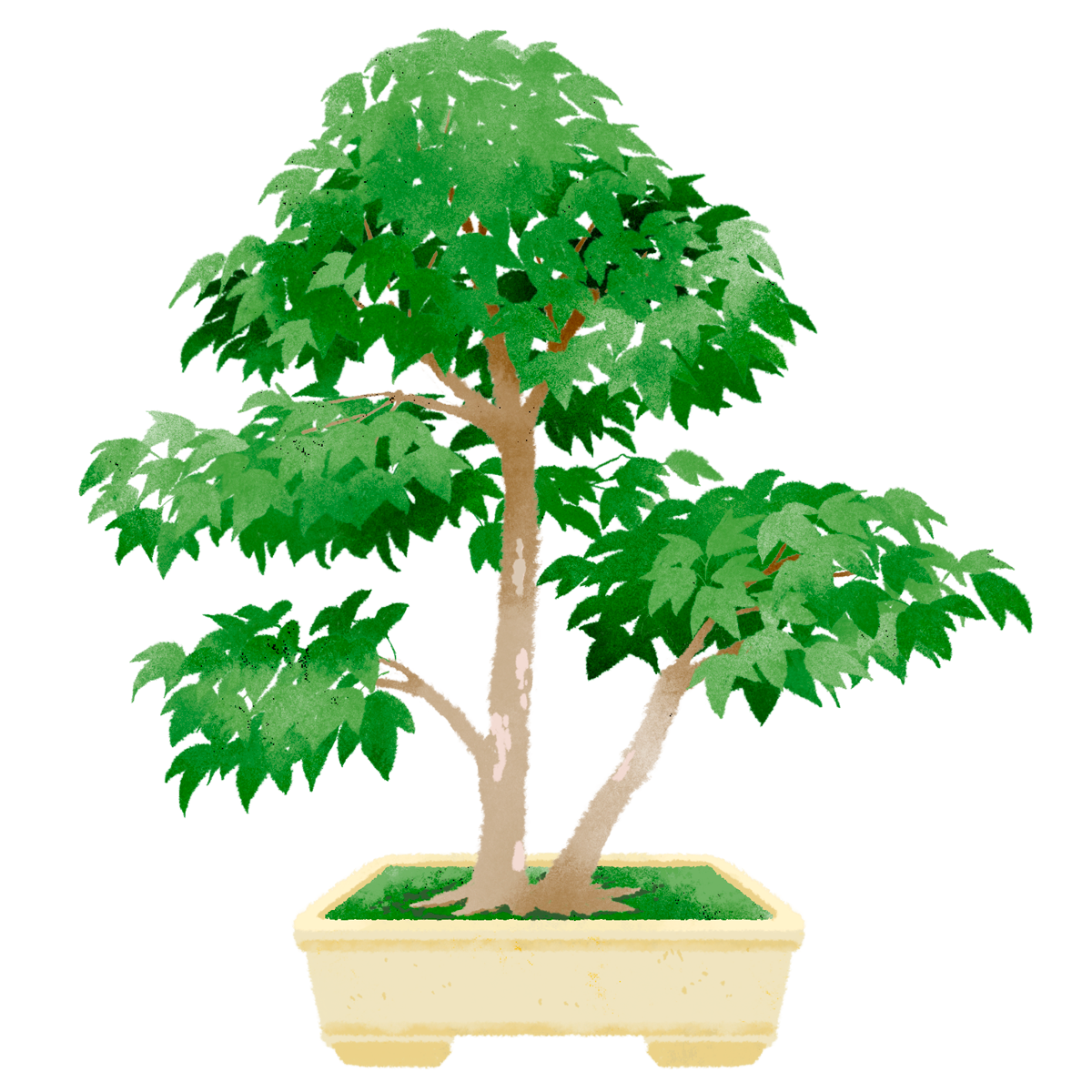
Tree forms

Chokkan : Formal upright
Ideally, the trunk should be straight and reaching directly overhead, with roots spreading out in all directions and the tree crown forming the summit so that the overall shape recalls that of a scalene triangle. This form can be said to most faithfully recreate that of large trees in nature, but for the trunk to grow straight at the same time as achieving a balanced look, a high level of skill is required.
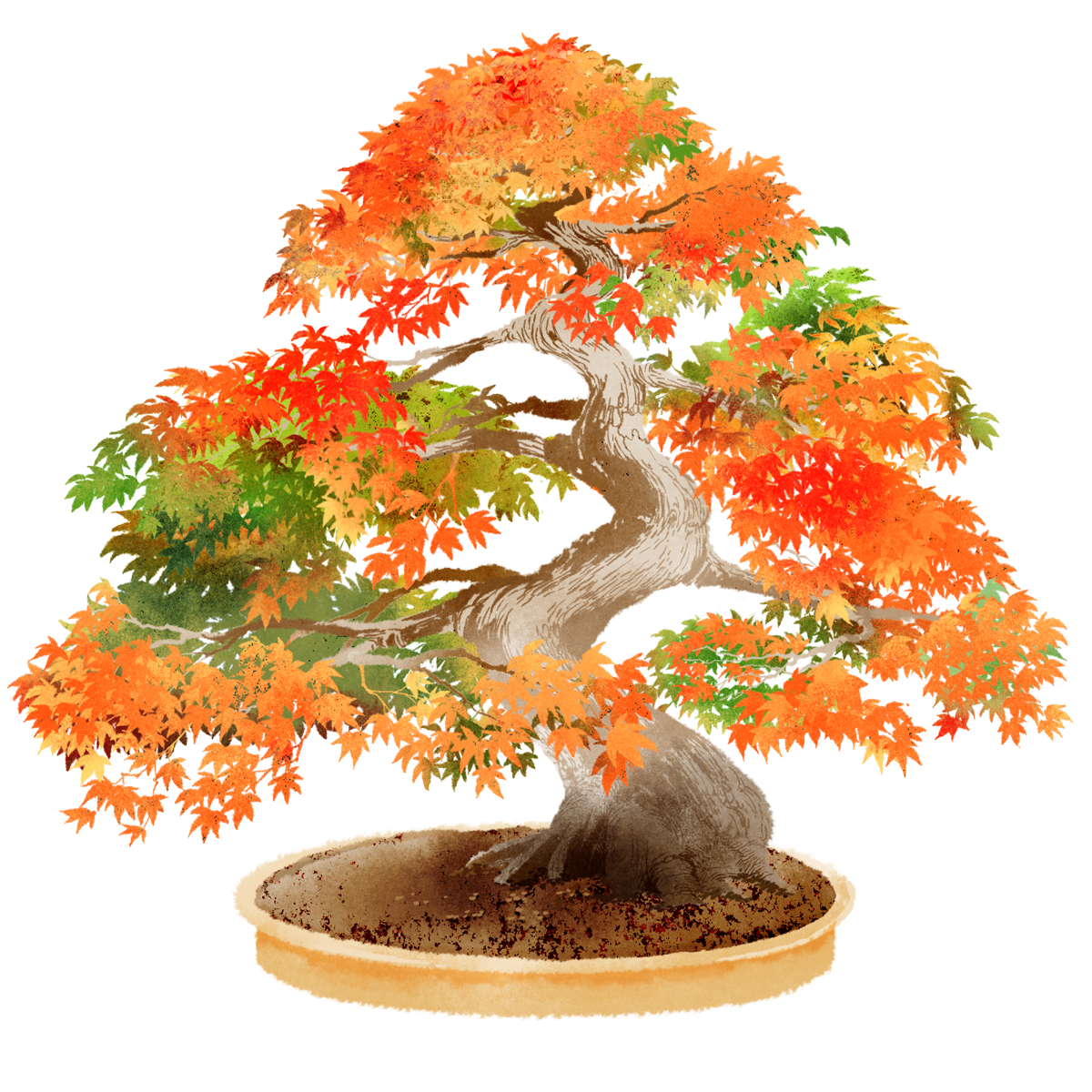
Moyogi : Informal upright
In this style, the trunk curves in all directions as it grows upwards, as if adding a gentle S shape to a straight trunk. This is one of the most prevalent tree forms in bonsai, with the curved trunk providing attractive appeal.
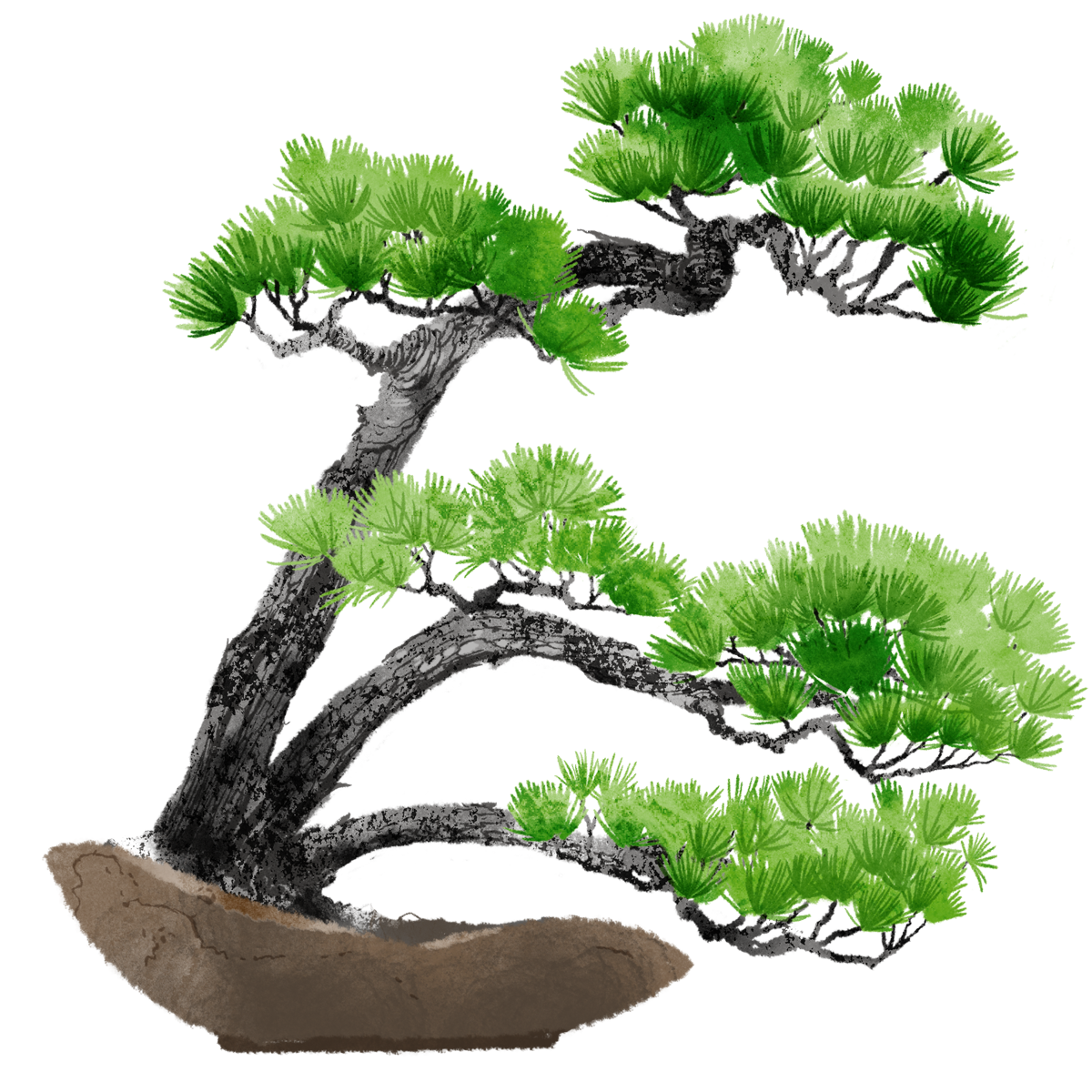
Fukinagashi : Windswept
This form evokes a tree that strong winds on a high mountain or by the ocean have caused to grow so that the trunk and the branches all flow in one direction. While similar to the slanting style, windswept trees invoke a sense of the active dynamic of the wind acting on the trees, whereas slanting styles suggest a more static appearance of an angled growing position. Coniferous trees and deciduous trees with branches that bend easily suit this style.
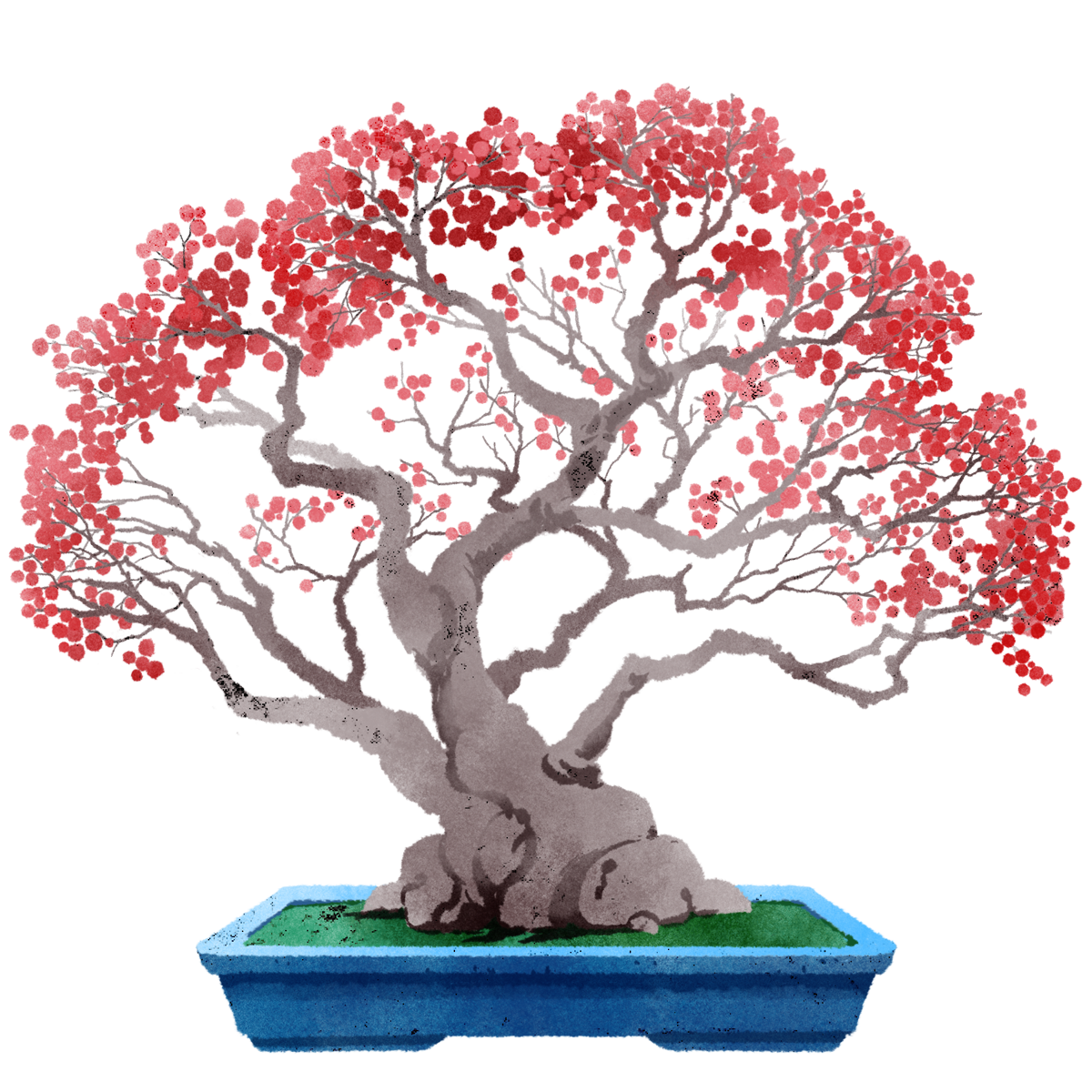
Kabudachi : Multi-trunk
In this style, several trunks grow from a single root system, with an odd number of trunks such as three, five, seven and so on being standard. This style is defined by the harmony created by the principal trunk with the other trunks and the sense of overall cohesion.
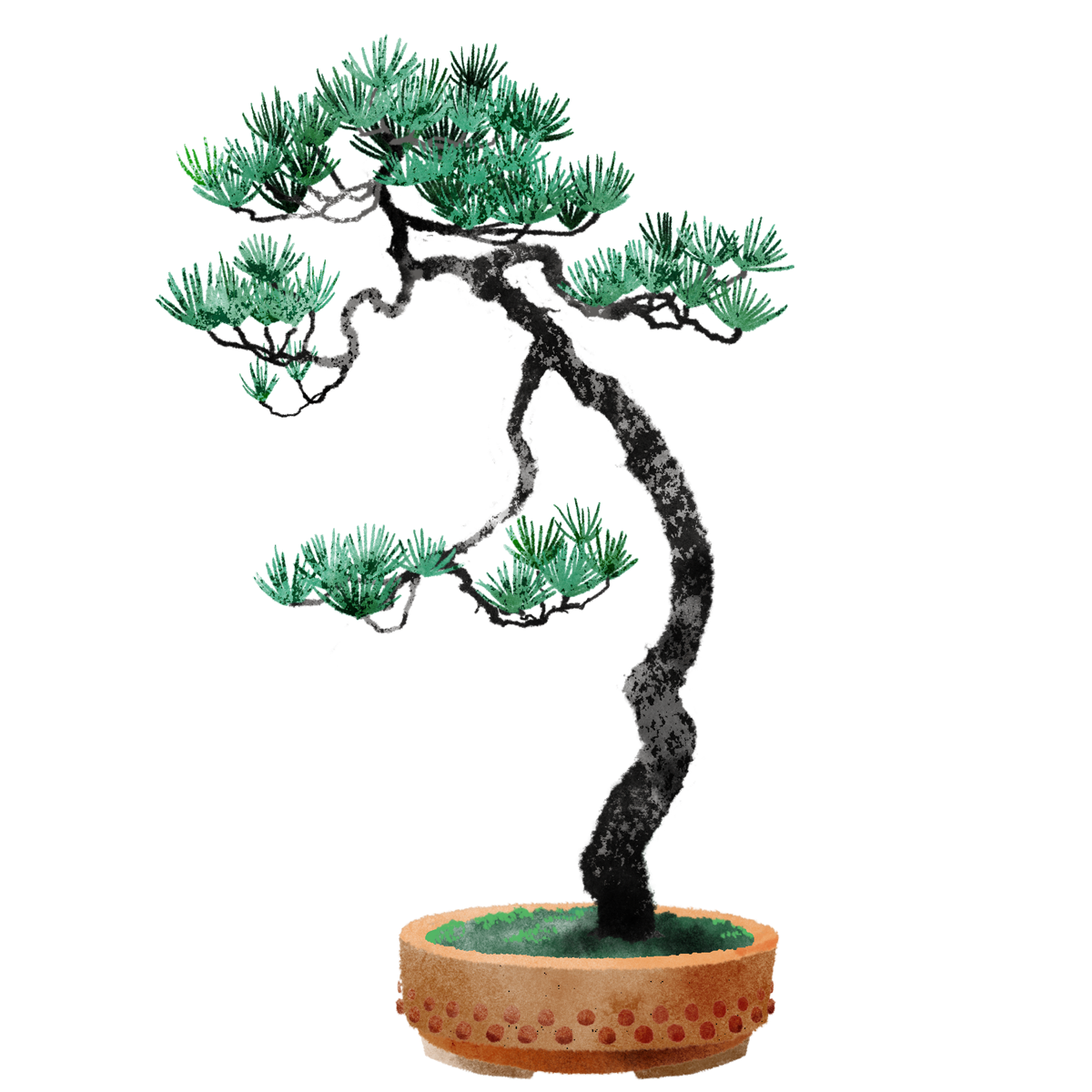
Bunjingi : Literati
In this style, the tree has a thin, tall trunk with no branches on the lower section, giving it a delicate appearance. It takes its name from its popularity with intellectuals who were fans of a witty, polished style of art during the Meiji era.
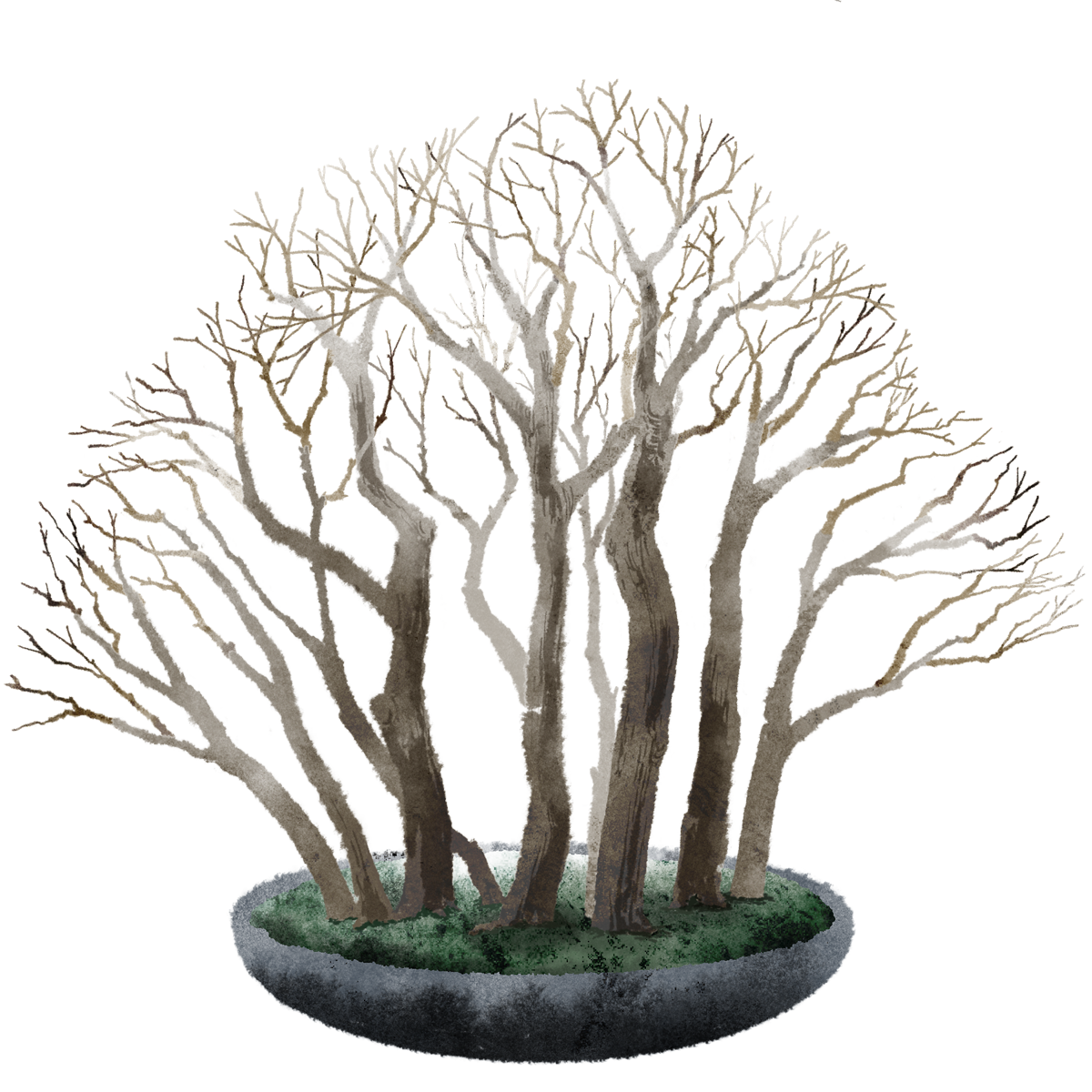
Yoseue : Group planting
Several trees of the same type are planted together in one pot to recall a wood or forest in this style of bonsai. For formal bonsai, it is usual to plant only one type of tree, but in the case of less formal compositions of wild grasses, several different grass types and accent plants may be planted together.
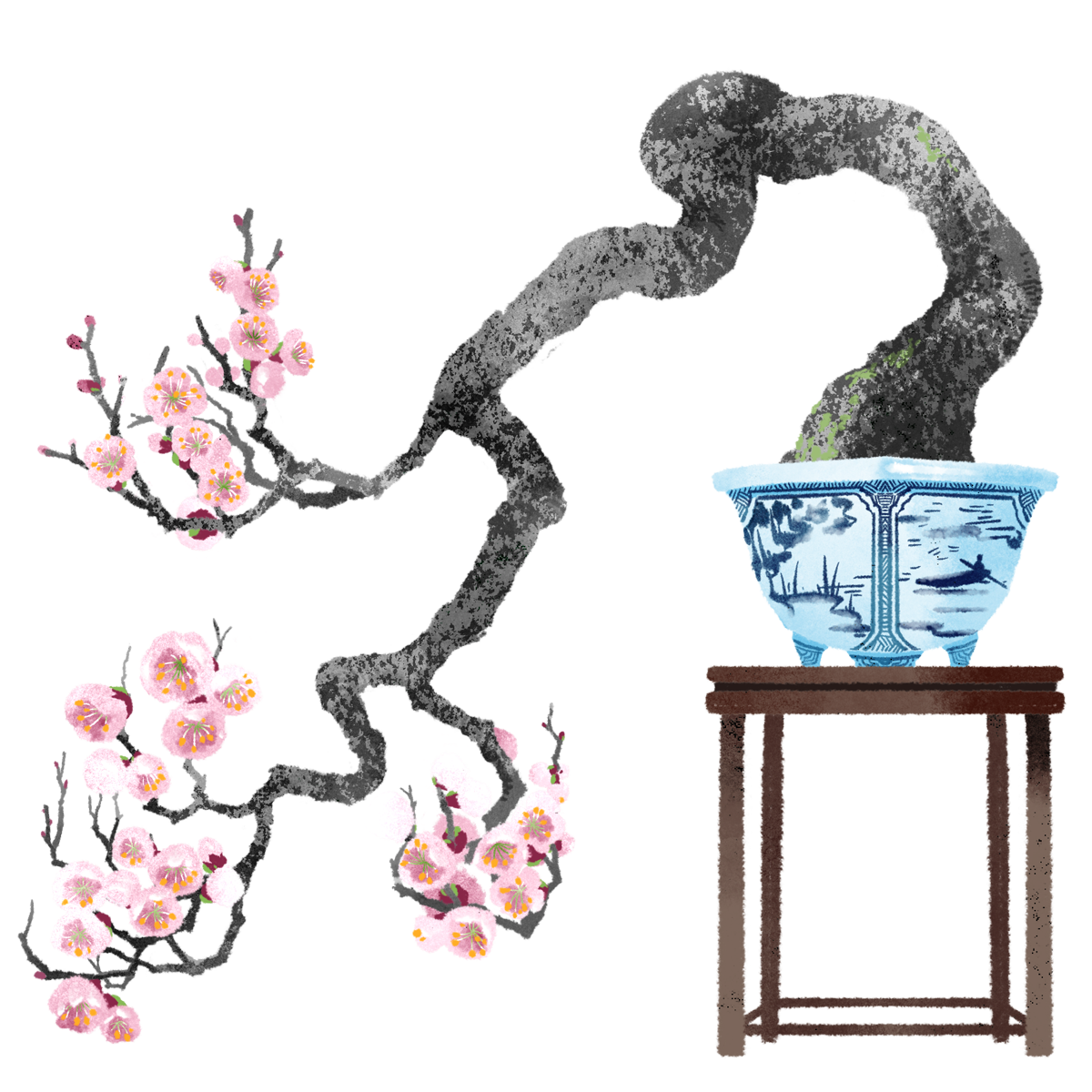
Kengai : Cascade style
This style recalls the strong, resilient figure of a tree growing with its roots spreading to cling to the side of a precipitous cliff. The style is divided into cascade and semi-cascade forms, with the cascade style having the lower ends of trunks and branches growing to reach below the base of the pot and those in the semi-cascade style ending above the pot base.
![]()



